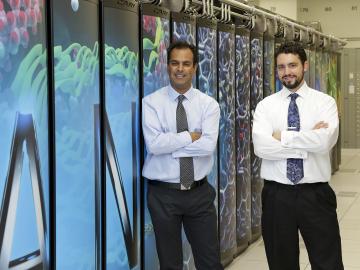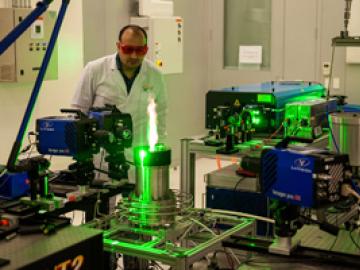ORNL's Communications team works with news media seeking information about the laboratory. Media may use the resources listed below or send questions to news@ornl.gov.
851 - 860 of 893 Results


Researchers at the Department of Energy’s Oak Ridge National Laboratory are the first team to sequence the entire genome of the Clostridium autoethanogenum bacterium, which is used to sustainably produce fuel and chemicals from a range of raw materials, including gases derived from biomass and industrial wastes.








A new concept in metallic alloy design – called “high-entropy alloys” - has yielded a multiple-element material that not only tests out as one of the toughest on record, but, unlike most materials, the toughness as well as the strength and ductility

